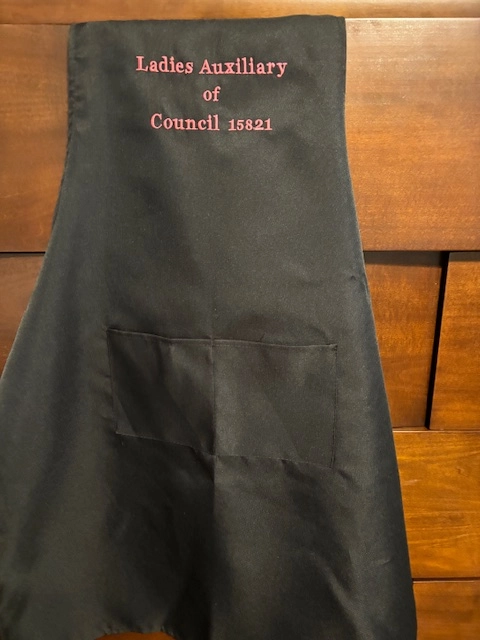The Art of Personalized Needlework: Opening the Keys to Creating Unique and Memorable Styles
Needlework, a craft soaked in tradition and creativity, holds within its complex stitches the power to change fabric right into a canvas of special expression. The secrets to developing custom embroidery layouts that astound the eye and leave a lasting impact depend on a delicate balance of method, creative thinking, and focus to information. As we look into the globe of custom-made needlework, we discover the nuanced interplay between thread option, stitch complexity, and style personalization that boosts a mere garment to an artwork. Join us on a trip via the art of personalized needlework as we unwind the enigmas behind crafting genuinely memorable and distinctive productions.
Choosing the Right Needlework Threads
When choosing embroidery strings, what key aspects should you think about to ensure the ideal outcomes for your customized layouts? The choice of needlework thread is important in figuring out the last outcome of your stitched design. Among the primary factors to consider is the material of the thread. Various products such as cotton, polyester, rayon, and silk use varying degrees of luster, toughness, and texture. It is necessary to choose a string product that enhances the material you are embroidering on and lines up with the wanted appearance of the design.
Thicker threads can include measurement and texture to your layout, while finer strings are excellent for intricate details and little text. In addition, taking into consideration the color fastness and washability of the thread is critical to make certain that your custom layouts maintain their quality and vibrancy over time.
Exploring Different Stitch Strategies
To explore the world of 'Checking out Various Stitch Techniques', one should grasp the ins and outs and subtleties that each sewing method offers the art of embroidery. Various stitch strategies not only add visual rate of interest but also add to the total structure and measurement of the layout. One preferred stitch technique is the satin stitch, which includes closely stuffed parallel stitches to create a smooth and shiny surface area, ideal for filling out shapes and developing vibrant details.
On the other hand, the backstitch is a versatile method usually used for laying out and including great information. It entails stitching backwards to create a solid line of embroidery. Additionally, the French knot stitch includes a responsive component to designs, perfect for developing distinctive accents like blossom centers or ornamental touches.
Checking out various stitch techniques allows embroiderers to have fun with light, shadow, and deepness within This Site their styles, boosting the visual allure and creative quality of their needlework tasks. By grasping various sewing methods, one can unlock endless opportunities for developing unique and remarkable custom-made embroidery pieces.
Incorporating Personalized Style Components
Having actually discovered the ins and outs of different stitch techniques such as the satin stitch, backstitch, and French knot, the focus now moves in the direction of including individualized design elements in custom-made needlework projects. Personalized style aspects play a vital role in making needlework jobs truly distinct and unforgettable.
An additional means to include personalized design components is by including symbols or concepts that hold special significance to the recipient or reflect their rate of interests and personality. For instance, including a favorite flower, animal, or hobby-related icon can make the embroidery style much more purposeful and customized. In addition, choosing shades that resonate with the recipient or align with the intended motif can better improve the customization of the needlework job.
Mastering the Art of Shade Coordination

One trick element of color control is understanding color concept. This consists of understanding how various shades interact with each various other, the emotions they convey, and exactly how they can be incorporated to create visually attractive layouts. By applying color theory concepts, embroiderers can produce maestro tailor unified shade palettes that boost the total look of the style.
Furthermore, paying interest to contrast is essential in shade control. Utilizing contrasting shades can aid certain aspects of the style pop, improve clarity, and produce an aesthetically vibrant embroidery item. By mastering the art of color coordination, embroiderers can boost their layouts and create remarkable pieces that reverberate with customers and visitors alike.
Enhancing Appearance With Advanced Needlework Stitches

French knots, for example, are excellent for including tiny, increased dots to your layout, imitating the look of beads or producing a textured surface area. Bullion knots, on the other hand, can be used to create twisted, ropelike components that add an elegant feeling to the needlework. Seed stitching entails little, scattered stitches that can complete locations with a polychromatic texture, while turkey work creates cosy, dimensional accents reminiscent of animal hair or foliage. useful content Trying out these sophisticated embroidery stitches permits you to press the borders of traditional needlework and develop absolutely one-of-a-kind and visually appealing structures in your designs.
Final Thought
In final thought, the art of personalized needlework includes a mix of selecting the appropriate threads, checking out numerous stitch techniques, integrating individualized style elements, grasping color control, and boosting texture with sophisticated stitches. By understanding and carrying out these crucial elements, embroiderers can create special and remarkable designs that showcase their imagination and skill. Needlework lovers can open the secrets to creating attractive and bespoke pieces that stand out and leave an enduring impact.